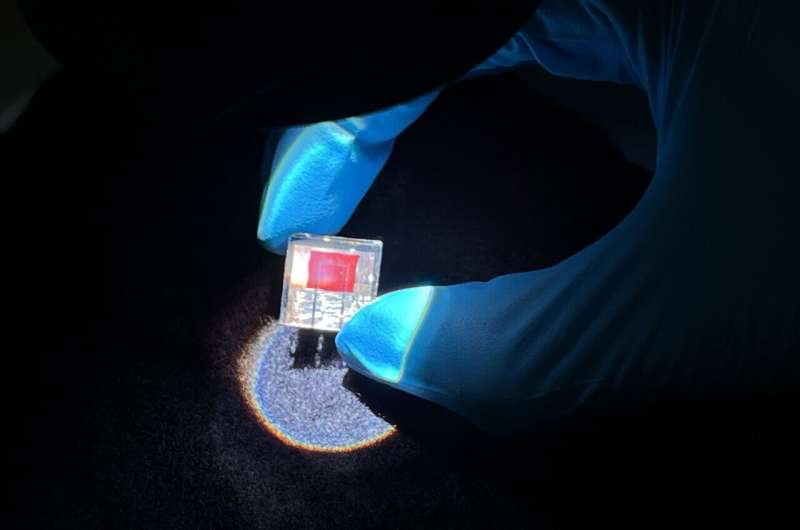Trying to improve the efficiency of solar cells to become independent from fossil energy sources is a major goal of solar cell research. A team led by physicist Dr. Felix Lang from the University of Potsdam, Prof. Lei Meng and Prof. Yongfang Li from the Chinese Academy of Sciences, Beijing, has now combined perovskite with organic absorbers to form a record-level tandem solar cell as reported in Nature.
Combining two materials that selectively absorb short and long wavelengths, e.g., blue/green and red/infrared parts of the spectrum, makes the best use of our sunlight and is a well-known strategy to increase efficiency in solar cells.
The best red/infrared absorbing parts of solar cells so far were, however, made from traditional materials, such as silicon or CIGS (copper indium gallium selenide). Unfortunately, these require high processing temperatures, and thus exhibit a relatively high carbon footprint.
In their work, Lang and colleagues combine two emerging solar cell technologies, namely perovskite and organic solar cells, that are both processed at low temperatures with a low carbon footprint. Achieving a record level of 25.7% efficiency for this new combination, however, was not easy, says Felix Lang. “This was only possible by combining two major breakthroughs.”
First, Meng and Li synthesized a novel red/infrared absorbing organic solar cell that extends its absorption even further into the infrared.
“Still, tandem solar cells were limited by the perovskite layer, which shows strong efficiency losses if adjusted to absorb only blue/green parts of the sun spectrum,” he explains. “To tackle this, we utilized a novel passivation layer applied to the perovskite that reduces material defects and improves the performance of the whole cell.”

